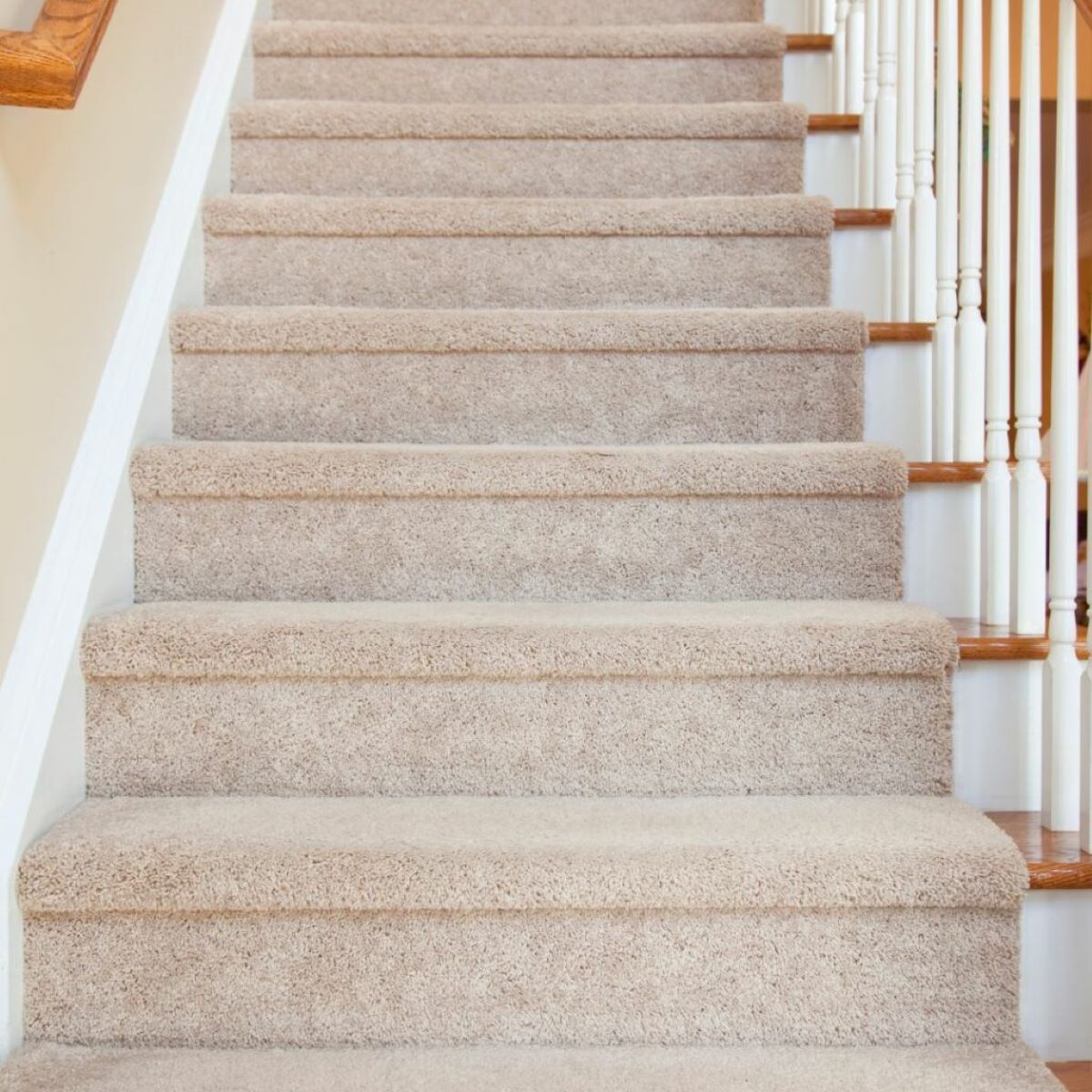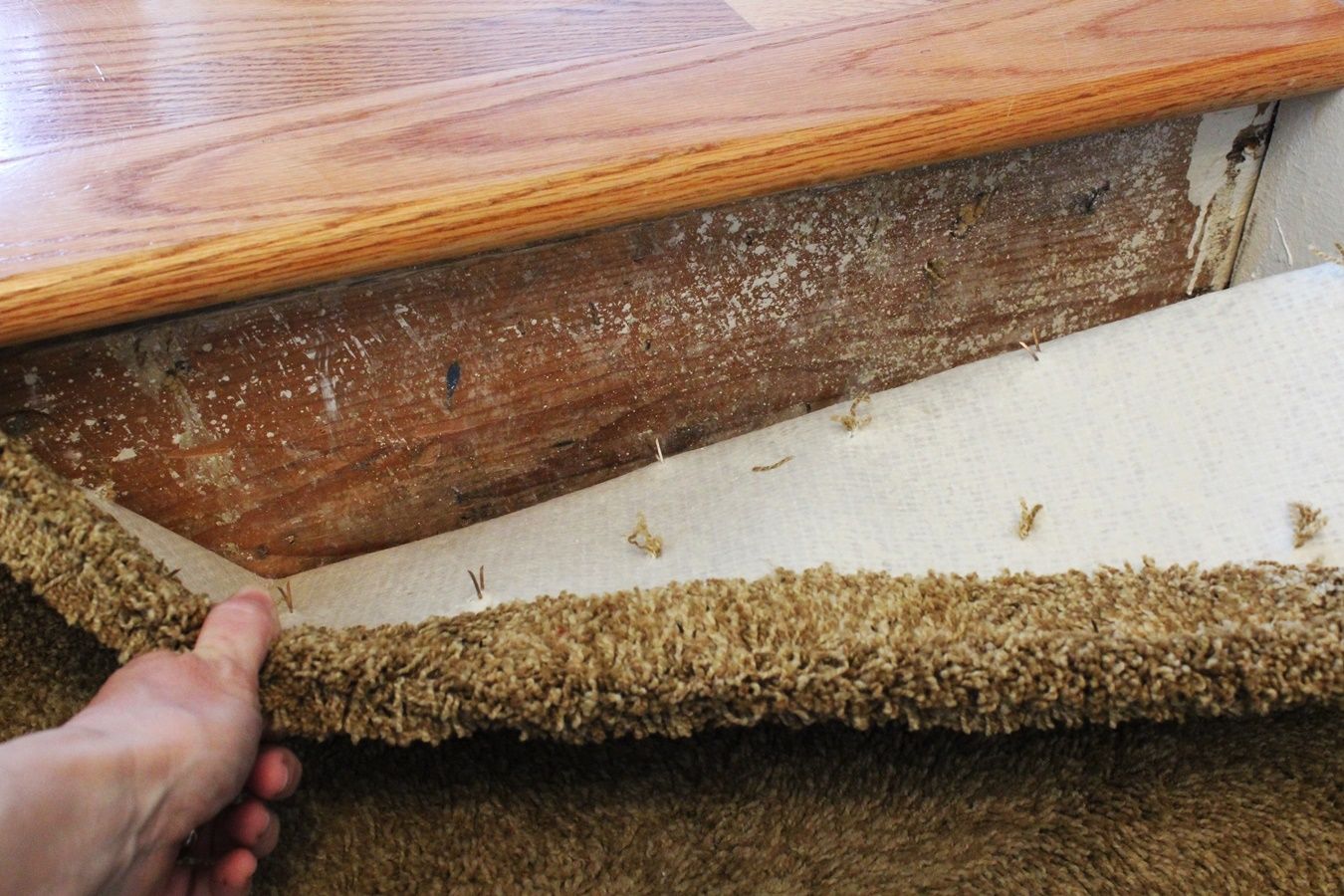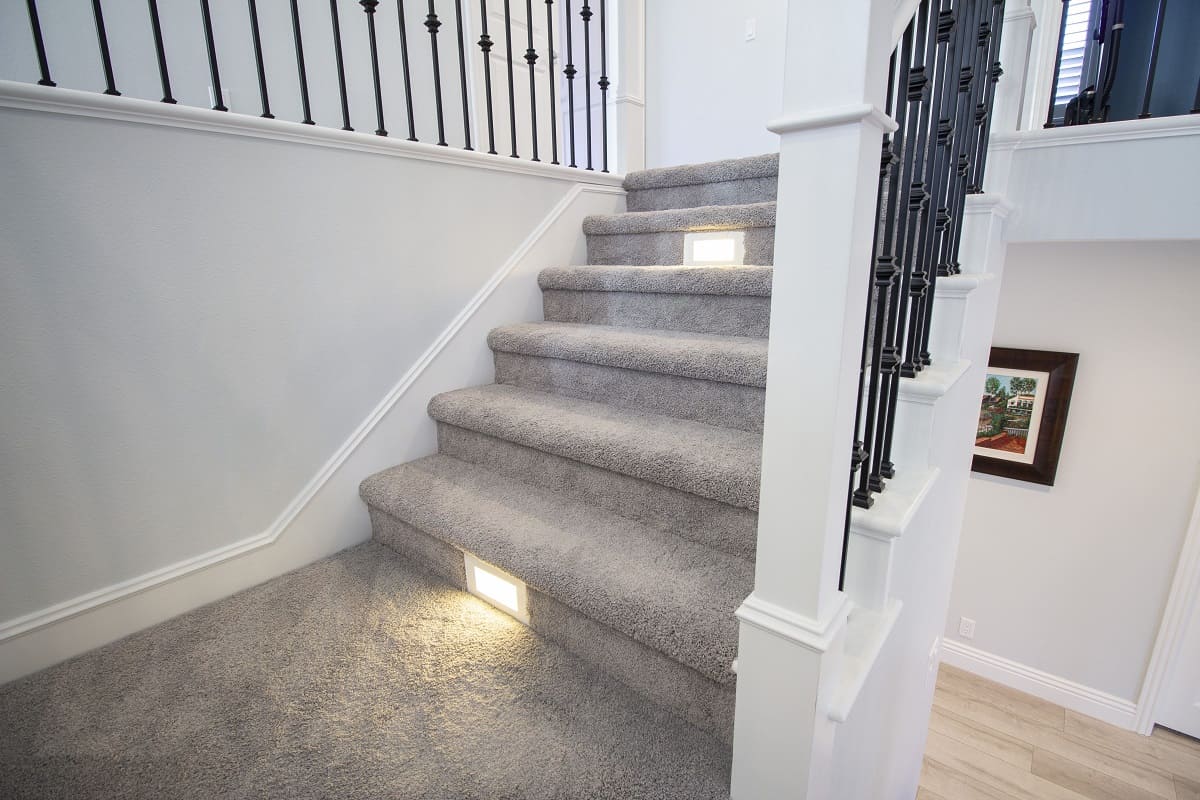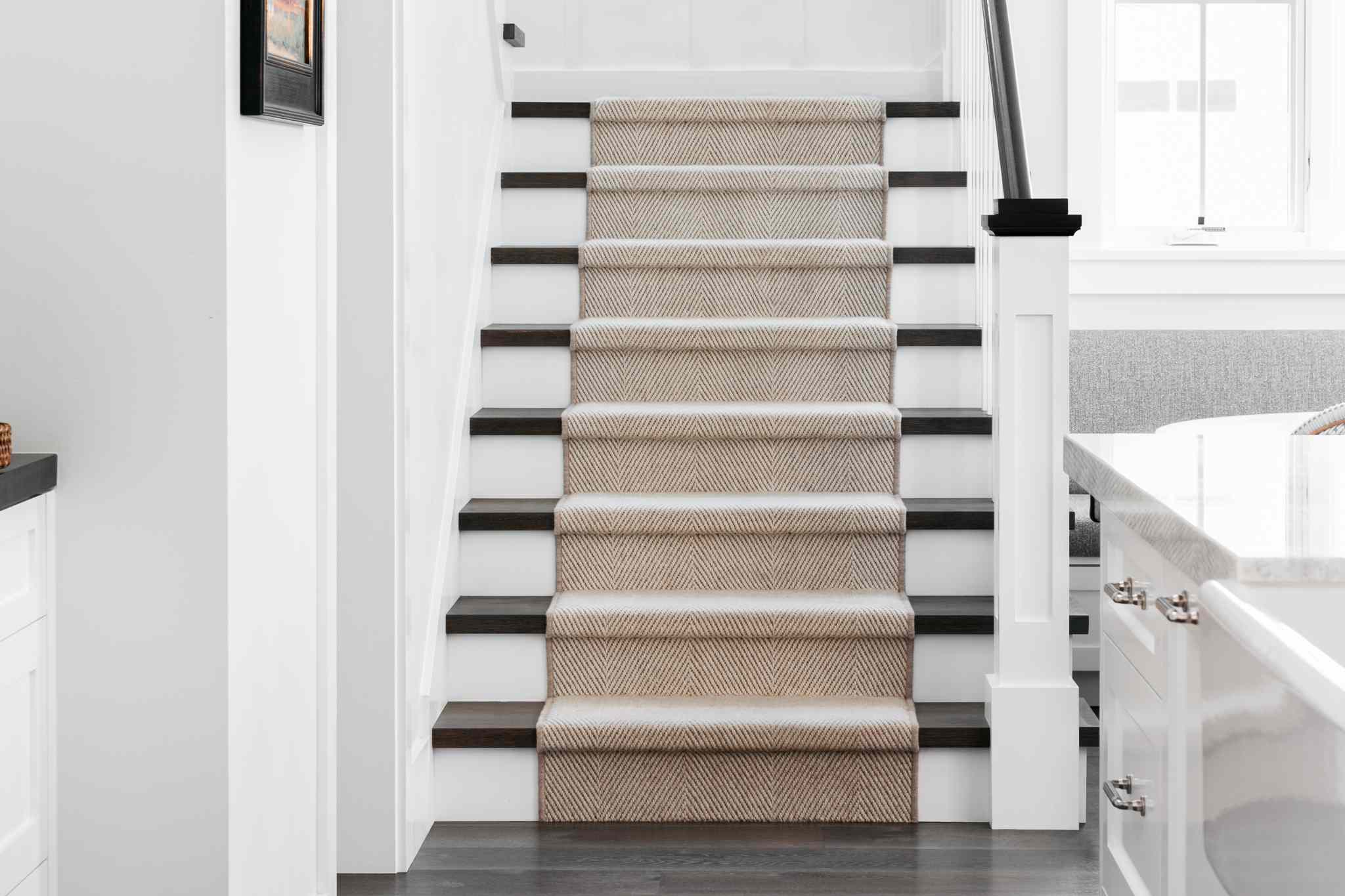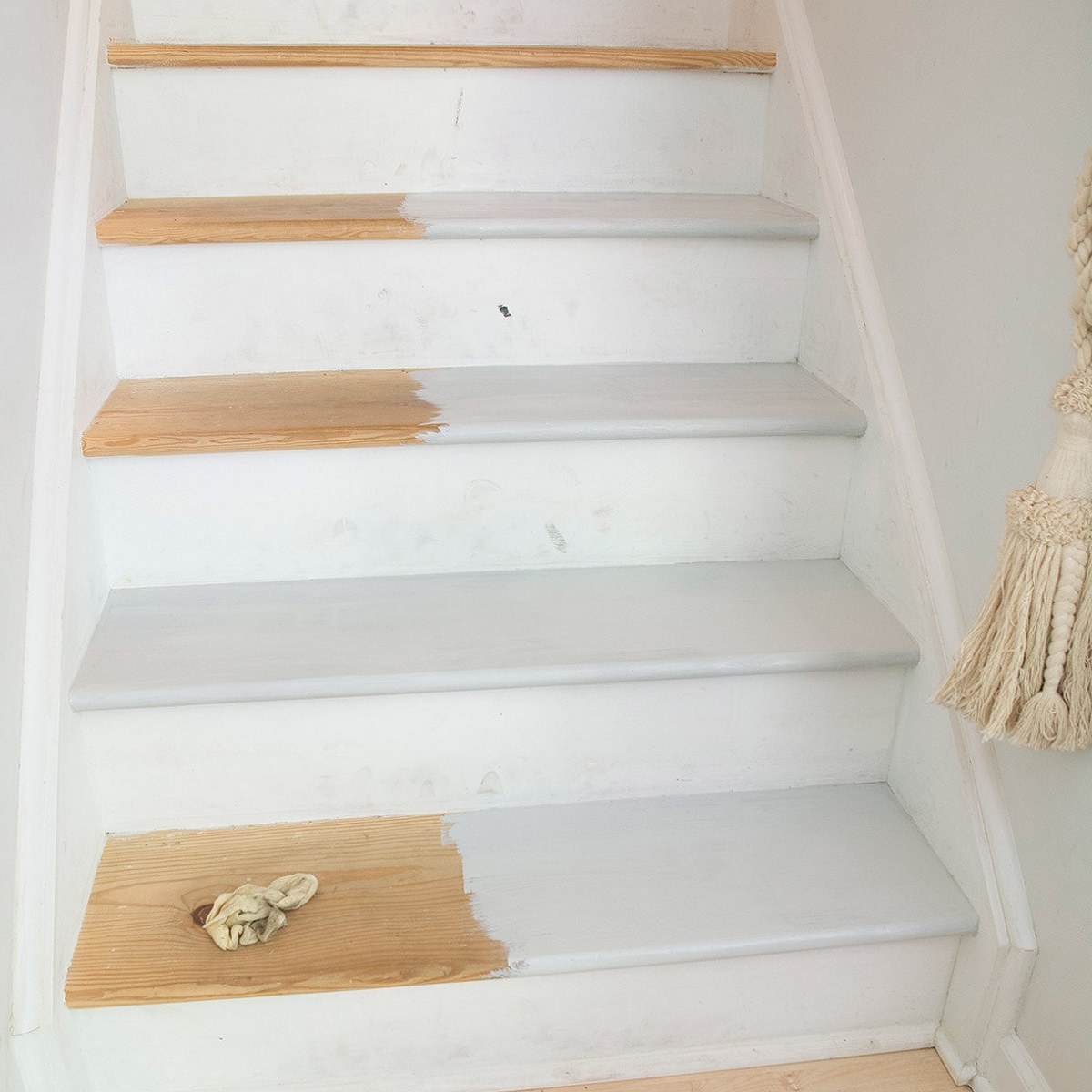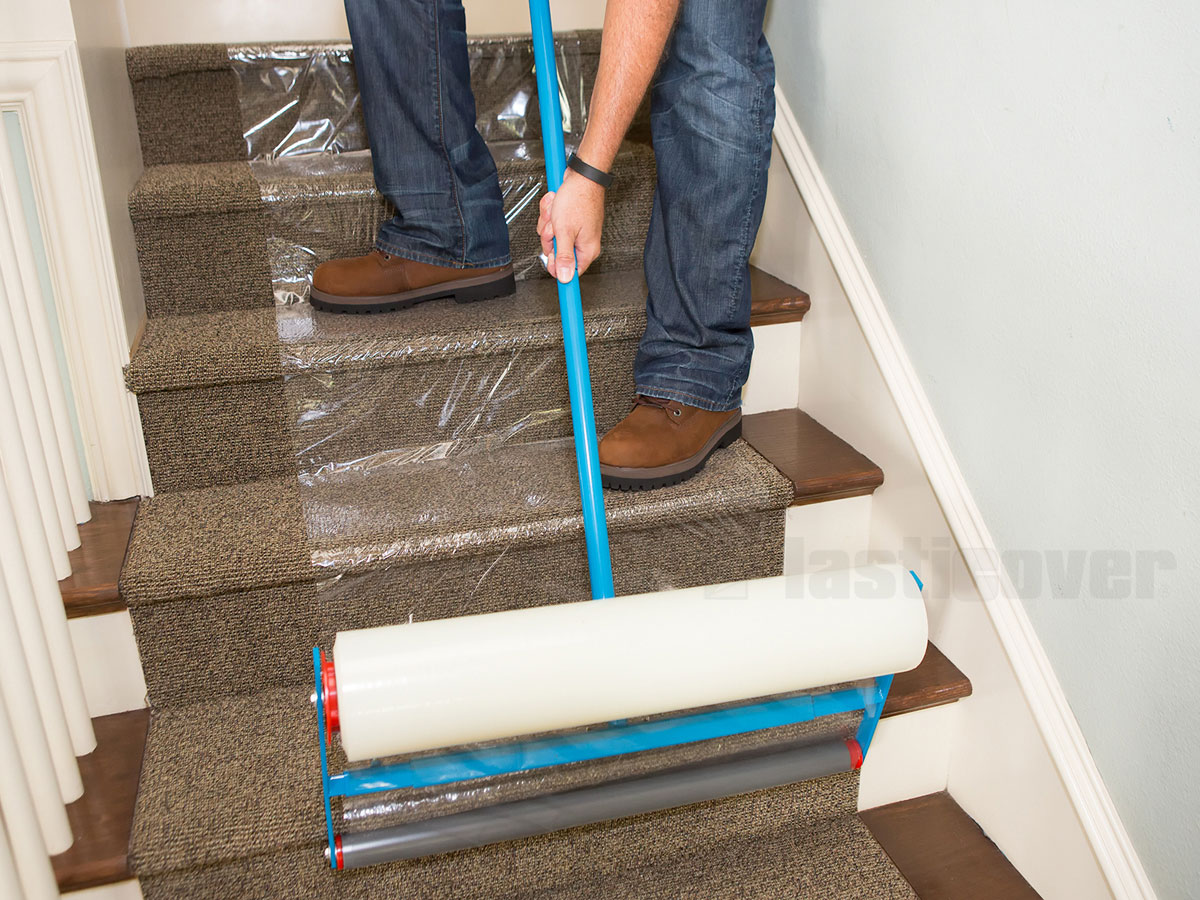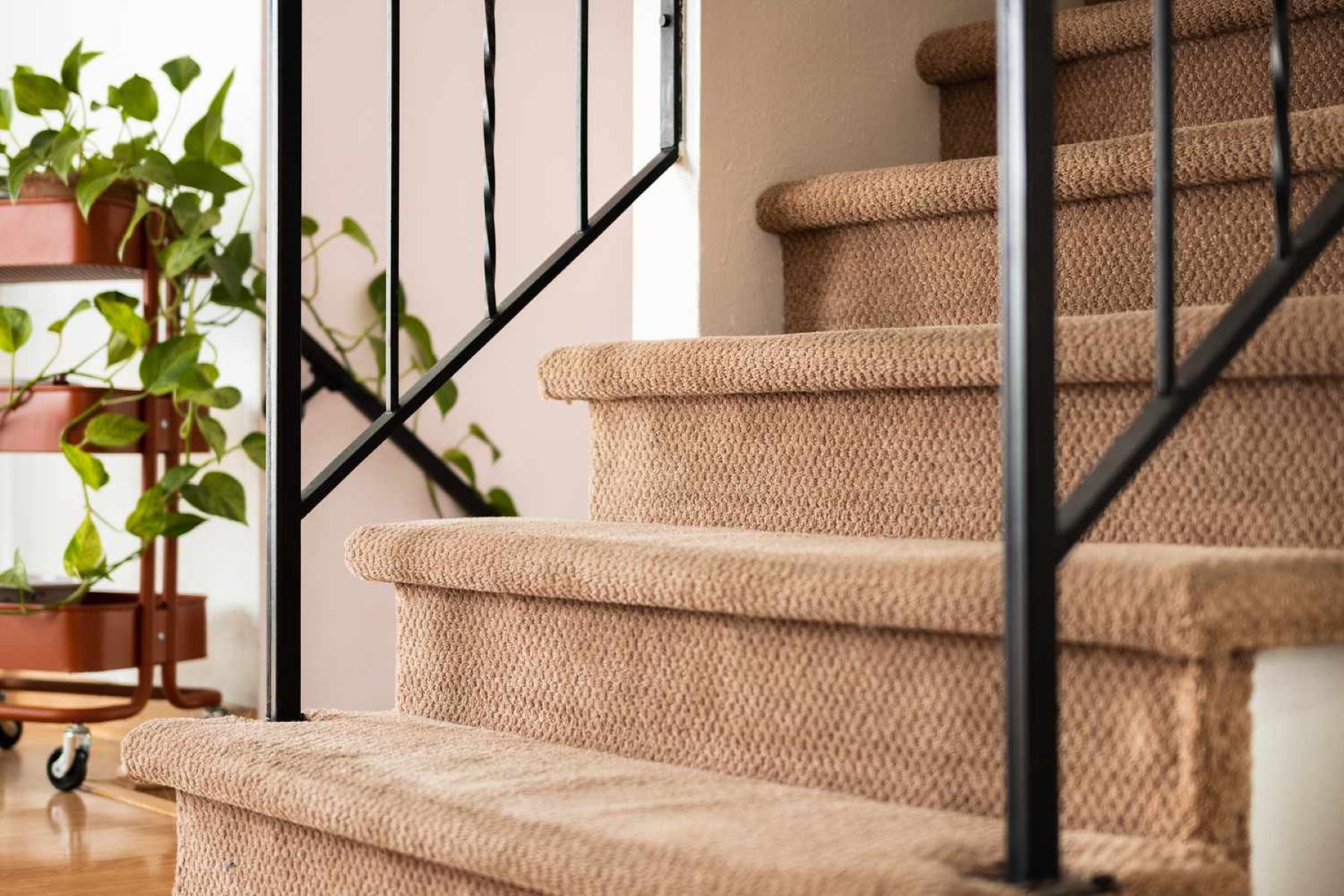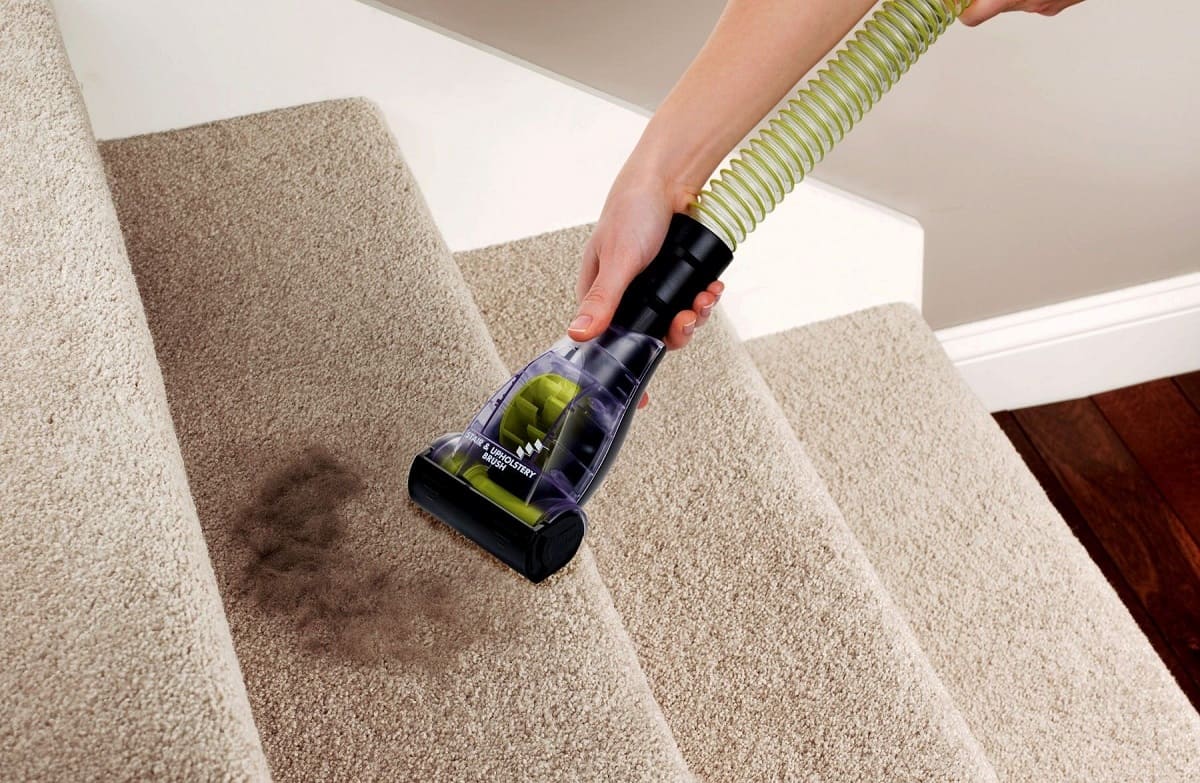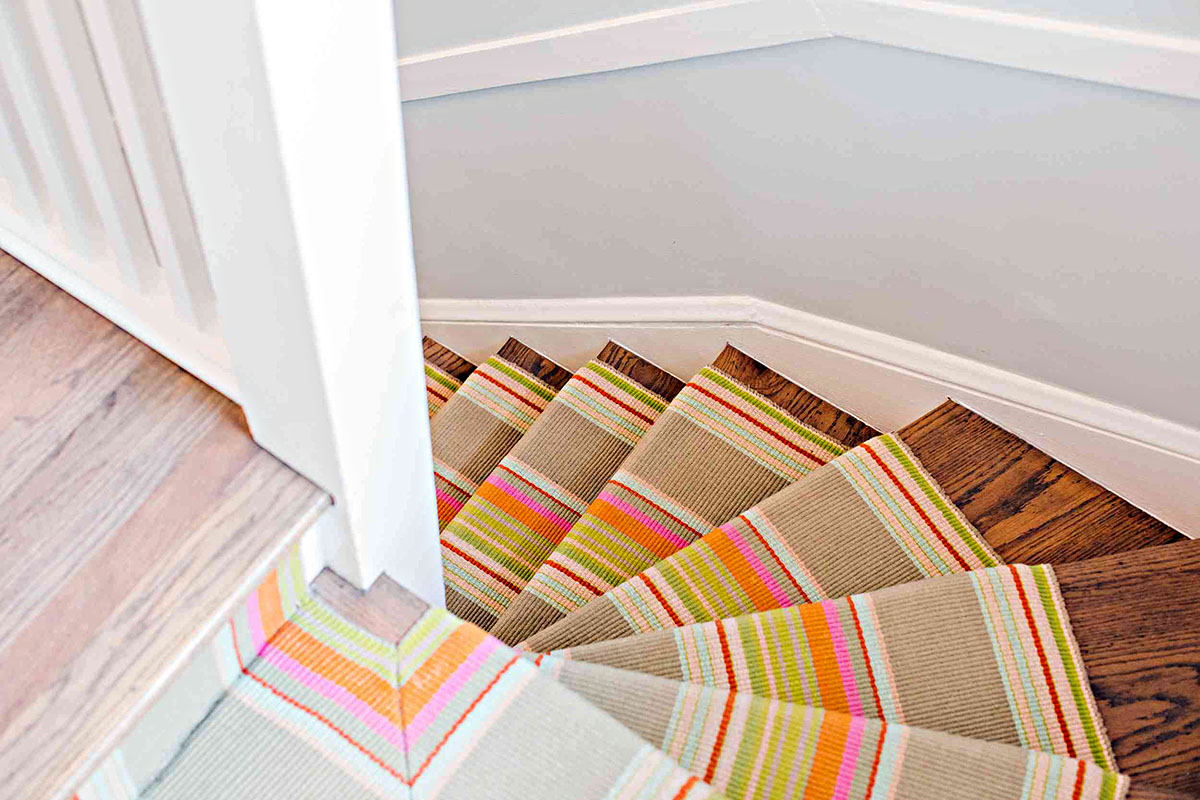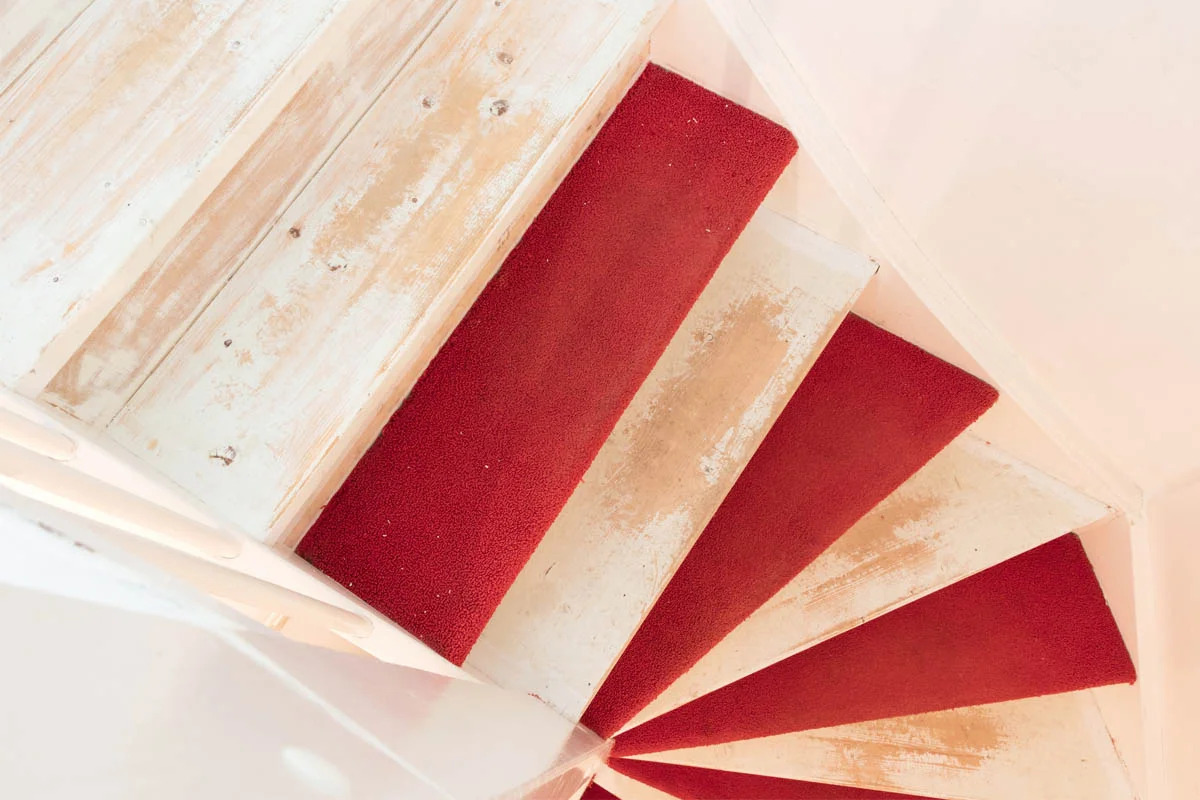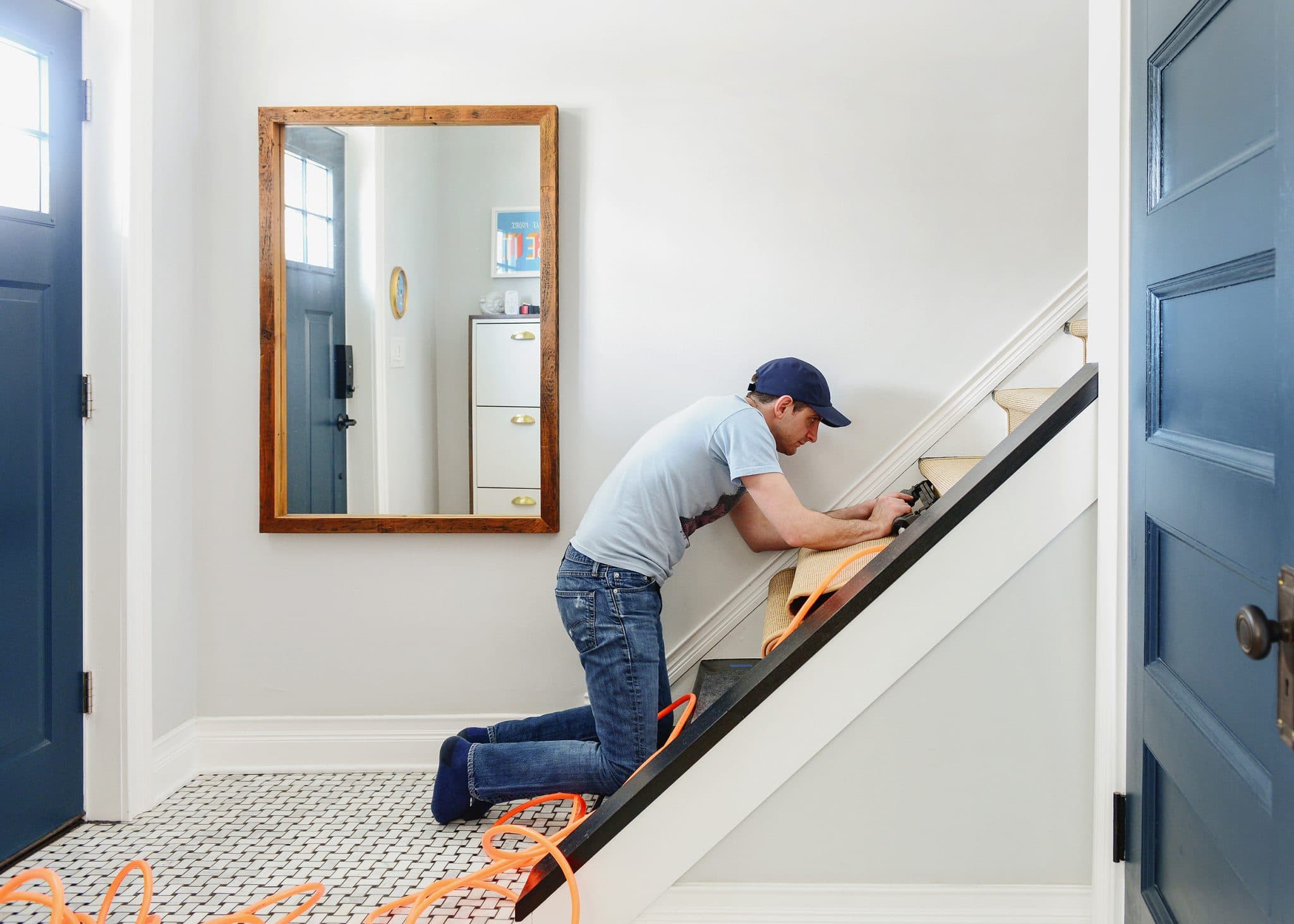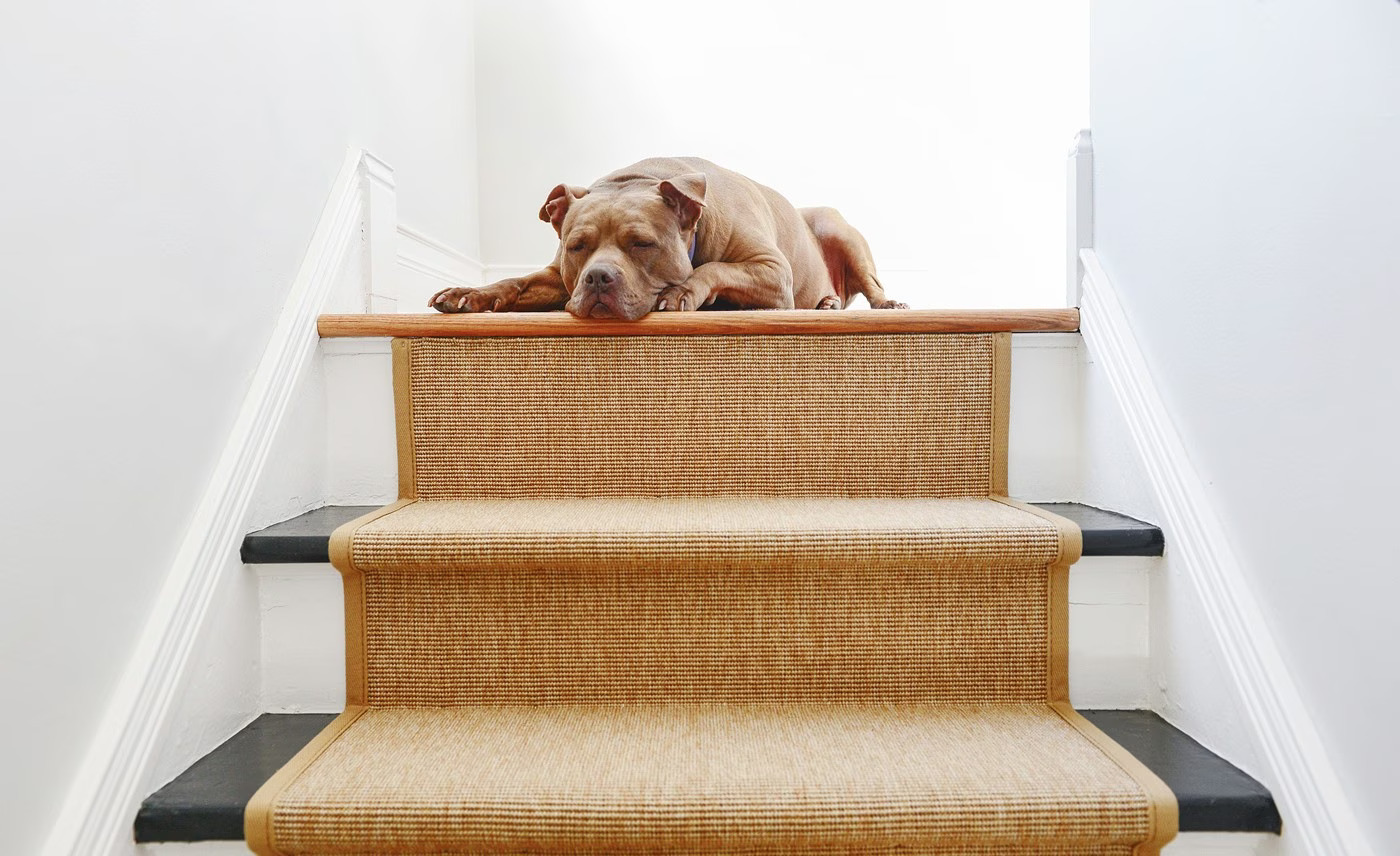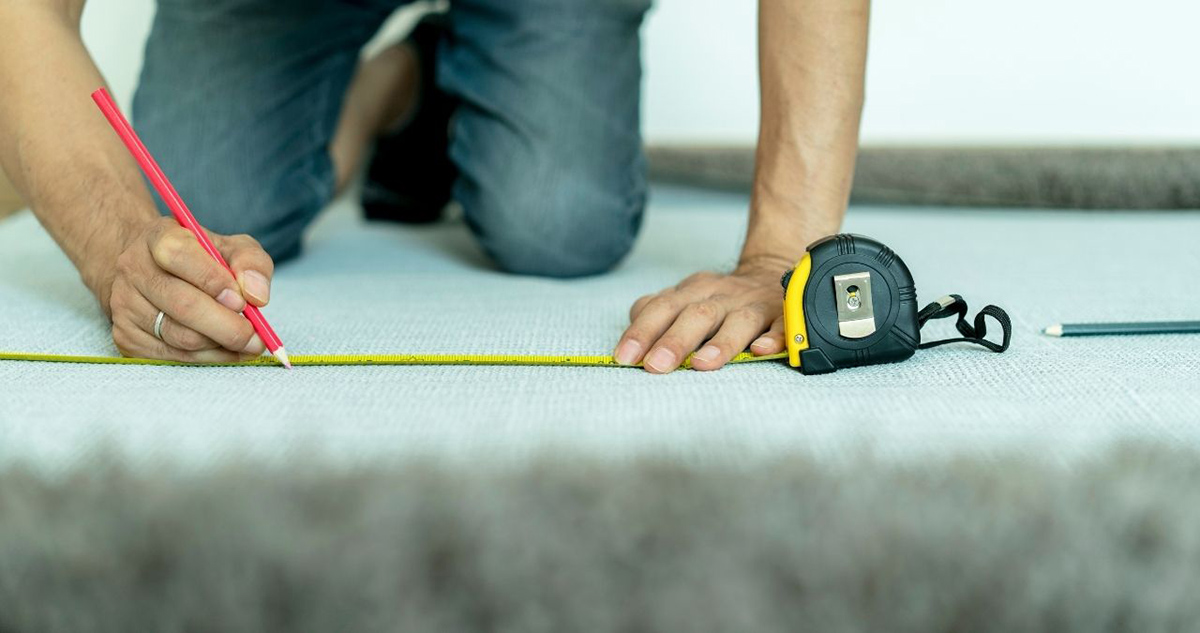

Articles
How To Measure For Carpet On Stairs
Modified: August 23, 2024
Learn how to accurately measure for carpet on stairs with our informative articles. Get step-by-step guidance and expert tips for a perfect fit and installation.
(Many of the links in this article redirect to a specific reviewed product. Your purchase of these products through affiliate links helps to generate commission for Storables.com, at no extra cost. Learn more)
Introduction
When it comes to enhancing the aesthetics and comfort of your home, carpeting is an excellent choice. It not only adds warmth and a cozy feel but also provides a cushioned surface to walk on. However, measuring for carpet installation, especially on stairs, can be a bit challenging.
Installing carpet on stairs requires precise measurements to ensure a perfect fit. Improper measurements can result in carpet that is too short or excessive wastage. To help you avoid these pitfalls, this article will guide you through the step-by-step process of measuring for carpet on stairs.
By following these instructions, you’ll be able to determine the correct amount of carpet needed, consider additional materials, and make informed decisions about the type of carpet and installation method. So, let’s delve into the details and get started with measuring for carpet on stairs!
Key Takeaways:
- Accurate measurements are crucial for a perfect fit when installing carpet on stairs. Consider extra carpet for pattern matching and adjustments, and consult professionals or use online calculators for precision.
- Safety, aesthetics, and precision are key when measuring for carpet on stairs. Double-check measurements, round up for leeway, and consider professional installation for a seamless and stunning result.
Read more: How To Fix Carpet On Stairs
Step 1: Gather the necessary tools
Before you begin measuring for carpet on your stairs, it’s essential to gather all the necessary tools. Having them at hand will make the process smoother and more efficient. Here are the tools you’ll need:
- Tape measure: A good quality tape measure is crucial for accurate measurements.
- Pencil or marker: You’ll need a writing tool to mark your measurements on the stairs.
- Notepad or paper: Keeping track of your measurements on paper will help you stay organized.
- Calculator: A calculator will come in handy for making calculations and determining square footage.
- Optional: If you’re planning to install the carpet yourself, you may also need tools like a carpet knife, knee kicker, and stair tool for installation.
Once you have these tools ready, you’re prepared to move on to the next steps.
Step 2: Measure the width of each stair
Measuring the width of each stair is an essential step in accurately determining the carpet required for your stairs. Follow these steps to measure the width of each individual stair:
- Start by measuring the width of the tread, which is the horizontal part of the step where you place your foot. Position your tape measure at one side of the tread.
- Stretch the tape measure across the width of the tread to the opposite side. Take note of the measurement in inches or centimeters.
- Repeat this process for each stair, measuring the width of the tread on each one.
Be sure to record each measurement as you go to avoid confusion later on. If you come across any variations in width between the stairs, make a note of these differences. It’s important to measure each stair individually because even small variations can affect the overall fit of the carpet.
Remember to measure the width of the tread only and not the riser, which is the vertical part of the step. Focusing on the tread width will give you the most accurate measurement for carpet installation.
Step 3: Measure the depth of each stair
Next, you’ll need to measure the depth of each stair, also known as the stair runner. The depth refers to the horizontal distance from the front of the tread to the back where it meets the riser. Follow these steps to measure the depth of each stair:
- Start by positioning your tape measure at the front edge of the tread.
- Extend the tape measure towards the back of the stair, aligning it with the edge of the riser.
- Note the measurement in inches or centimeters.
- Repeat this process for each stair and record the measurements.
Just like with measuring the width, it’s important to measure the depth of each individual stair. Stairs can vary in depth, and recording the measurements for each one will ensure a precise fit for the carpet.
Remember not to include any overhang from the tread when measuring the depth. The depth measurement should only include the actual horizontal length of the tread.
By accurately measuring the width and depth of each stair, you’re taking significant steps towards ensuring a proper fit for the carpet. Let’s move on to the next step to calculate the total square footage needed for your stair carpet.
Step 4: Calculate the total square footage needed
Now that you have measured the width and depth of each stair, it’s time to calculate the total square footage needed for your carpet. This step will help you determine how much carpet you’ll need to cover the entire staircase. Follow these instructions to calculate the total square footage:
- Start by multiplying the width of each stair by the depth. This will give you the square footage of each individual stair.
- Add up the square footage of all the stairs to get the total square footage needed for the entire staircase.
For example, if one stair has a width of 30 inches and a depth of 12 inches, the square footage of that stair would be 30 inches multiplied by 12 inches, which equals 360 square inches. Repeat this calculation for each stair and then add up the square footage of all the stairs to get the total.
To convert square inches to square feet, divide the total square inches by 144. This will give you the total square footage needed for your carpet.
Keep in mind that many carpet retailers sell carpets by the square yard, so it’s helpful to convert square footage to square yards if necessary. To convert square feet to square yards, divide the total square footage by 9.
Calculating the total square footage needed will give you a better idea of how much carpet to purchase. However, it’s advisable to add some extra carpet to account for any mistakes or adjustments during installation. Let’s explore that in the next step.
Read more: How Much To Carpet Stairs
Step 5: Account for extra carpet
When measuring for carpet on stairs, it’s crucial to account for extra carpet. This additional carpet will be necessary for several reasons, including cutting and matching the pattern, aligning the carpet on the stairs, and making adjustments during installation. Here’s how to determine the amount of extra carpet you should add:
- Consider the carpet pattern: If you have a patterned carpet, you’ll need extra material to ensure proper alignment and matching of the pattern on each stair. This requires additional carpet on both the width and depth of each stair.
- Factor in waste and cutting loss: It’s common to have some waste and cutting loss during the installation process. Carpet may need to be trimmed, adjusted, or discarded due to imperfections or mistakes. Adding extra carpet helps account for these potential losses.
- Calculate the percentage of extra carpet: As a general rule, it’s recommended to add 10% to 15% more carpet when measuring for stairs. This additional percentage accounts for waste, pattern matching, and adjustments. Multiply the total square footage needed by the desired percentage to determine the amount of extra carpet to include.
By factoring in these considerations and adding extra carpet, you’ll ensure you have enough material to complete the installation successfully. It’s always better to have a little extra carpet than to fall short during the process.
Next, we’ll discuss the type of carpet and installation method to consider when measuring for carpet on stairs.
When measuring for carpet on stairs, always measure the width of each step and the height of the riser. Add these measurements together and multiply by the number of steps to get the total length of carpet needed.
Step 6: Consider the type of carpet and installation method
When measuring for carpet on stairs, it’s important to consider the type of carpet and the installation method you plan to use. The choice of carpet and installation method can impact the measurements and requirements for your stairs. Here are some factors to consider:
- Carpet type: There are various types of carpets available, such as plush, frieze, berber, or textured. Each type has different pile heights, densities, and textures. Keep in mind that the thickness and density of the carpet can affect the measurements and the amount of carpet needed.
- Installation method: The installation method can also impact the measurements. The two common methods for carpet installation on stairs are waterfall and runner installation. In a waterfall installation, the carpet covers the entire stair surface from the tread to the riser, creating a seamless look. In a runner installation, the carpet covers only the tread, leaving the riser visible. The installation method will impact the width and length of the carpet needed.
- Backing and padding: Consider the type of backing and padding you plan to use. Some carpets have attached backing or require additional padding for added comfort and insulation. Keep in mind that these additional layers can affect the measurements and the overall fit of the carpet.
When measuring for carpet on stairs, it is essential to consult with the carpet manufacturer or retailer for specific instructions and guidance based on the carpet type and installation method you have chosen.
As we move forward, let’s discuss if any additional materials are required for carpet installation on stairs.
Step 7: Determine if additional materials are required
When measuring for carpet on stairs, it’s important to assess whether any additional materials are required to complete the installation. These materials will depend on the specific needs of your stairs and the type of carpet you have chosen. Here are some common additional materials to consider:
- Carpet grippers: Also known as tack strips, carpet grippers are slender strips with small pins that hold the carpet in place along the edges of the stairs. These grippers ensure a secure fit and prevent the carpet from slipping or shifting.
- Adhesive or carpet tape: Depending on the installation method and the type of carpet, you may need adhesive or carpet tape to secure the carpet on the stairs. This is particularly important for runner installations or when using certain types of carpet backing.
- Transition strips: If you are combining the carpeted stairs with other flooring types, such as hardwood or tile, you may need transition strips. These strips create a smooth and visually appealing transition between different flooring materials.
- Seam tape or glue: If your carpet requires multiple pieces to cover the stairs, you may need seam tape or glue to join the pieces together seamlessly. This ensures a cohesive appearance without visible seams.
- Underlayment or padding: Depending on the type of carpet and the desired comfort level, you may need additional underlayment or padding. This provides extra cushioning and insulation beneath the carpet for a softer feel and improved acoustics.
Remember to consult with a professional or the retailer to determine the specific additional materials required for your carpet and installation method. They can provide guidance and recommendations based on your unique situation.
In the next step, we’ll explore options to consult a professional or use online carpet calculators for precise measurements.
Step 8: Consult a professional or use online carpet calculators
Measuring for carpet on stairs can be a complex task, especially if you’re unfamiliar with the process or unsure about the accuracy of your measurements. To ensure precise measurements and avoid any costly mistakes, consider consulting a professional or utilizing online carpet calculators. Here are some options to explore:
- Professional measurement service: Many carpet retailers offer professional measurement services. These professionals specialize in accurately measuring for carpet installation, including stairs. They have the expertise and tools necessary to provide you with precise measurements and can offer valuable insights based on your specific requirements.
- Online carpet calculators: There are several online carpet calculators available that can assist you in determining the amount of carpet needed for your stairs. These calculators typically require you to input the measurements of your stairs, including width and depth, and any additional information, such as the number of stairs and desired carpet type. The calculator will then provide you with an estimate of the total square footage needed and the amount of carpet required.
- Design software or apps: Some carpet manufacturers or interior design software offer design tools and applications that include carpet measurement features. These tools allow you to digitally input your stair measurements and visualize the carpet installation before making a purchase. They often provide accurate measurements and help you make informed decisions about the carpet type, pattern positioning, and overall aesthetics.
Consulting a professional or using online carpet calculators can provide you with peace of mind and eliminate any uncertainties regarding your measurements. They can also assist you in selecting the right carpet, determining the cost, and planning the installation process.
Finally, let’s conclude our guide on measuring for carpet on stairs.
Read more: How To Shampoo A Carpet On Stairs
Conclusion
Measuring for carpet on stairs may seem daunting at first, but by following the steps outlined in this guide, you’ll be well-prepared to tackle the task with confidence. Remember to gather the necessary tools, measure the width and depth of each stair, calculate the total square footage needed, account for extra carpet, consider the type of carpet and installation method, determine if additional materials are required, and consult a professional or use online carpet calculators for precise measurements.
Accurate measurements are crucial to ensure a perfect fit and seamless carpet installation on your stairs. Taking the time to measure correctly and accounting for additional factors such as carpet patterns, waste, and adjustments will help you avoid costly mistakes and achieve professional-looking results.
If you’re uncertain about any step or have complex carpeting needs, don’t hesitate to consult a professional who can provide expert advice tailored to your specific situation. Online carpet calculators and design tools can also be valuable resources to assist in your measurements and planning.
Remember, measuring for carpet on stairs requires attention to detail and precision. By following this guide and taking the necessary precautions, you’ll be well on your way to enjoying a beautifully carpeted staircase that enhances the comfort and aesthetics of your home.
Good luck with your carpet measurement and installation journey!
Additional Tips and Considerations
As you embark on measuring for carpet on stairs, here are some additional tips and considerations that can help make the process even smoother:
- Double-check your measurements: It’s always a good idea to double-check your measurements to ensure accuracy. Mistakes in measurements can lead to improperly fitting carpet, so take your time and be thorough.
- Round up: When calculating the square footage needed, it’s a good practice to round up to the nearest whole number. This allows for some extra leeway and ensures you have enough carpet to cover the entire staircase.
- Consider safety: Safety is important, especially when it comes to stairs. To minimize the risk of slipping, consider using carpet with a low pile height and good traction. Additionally, ensure the carpet is securely fastened to prevent any tripping hazards.
- Account for any unevenness: If your stairs have any unevenness or irregularities, take them into account when measuring. Adjustments may be needed to accommodate for these variations.
- Factor in desired overhang: Determine if you want the carpet to have any overhang on the sides of each stair. This can vary based on personal preference and the overall aesthetic you want to achieve.
- Consult installation guidelines: Different carpet types and installation methods may have specific guidelines for measurements and installation. Consult the manufacturer’s recommendations and installation guidelines for the carpet you have chosen.
- Consider professional installation: If you’re unsure about measuring or installing the carpet yourself, it may be worth considering professional installation. This ensures that the job is done correctly and can save you time and potential frustrations.
- Maintain your carpet: Once your carpet is installed, proper maintenance is essential to keep it looking its best. Regular vacuuming, prompt spot cleaning, and professional carpet cleaning can help prolong the lifespan and appearance of your carpeted stairs.
By keeping these additional tips and considerations in mind, you’ll be well-prepared to navigate the process of measuring for carpet on stairs. With careful planning and attention to detail, you can achieve a stunning and functional carpeted staircase that enhances the overall ambiance and comfort of your home.
Frequently Asked Questions about How To Measure For Carpet On Stairs
Was this page helpful?
At Storables.com, we guarantee accurate and reliable information. Our content, validated by Expert Board Contributors, is crafted following stringent Editorial Policies. We're committed to providing you with well-researched, expert-backed insights for all your informational needs.
